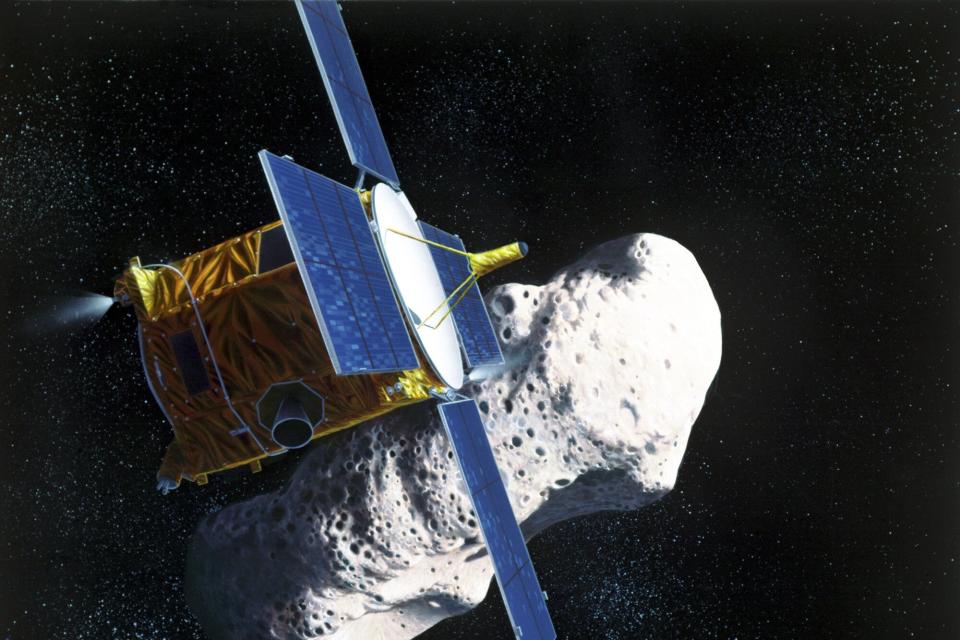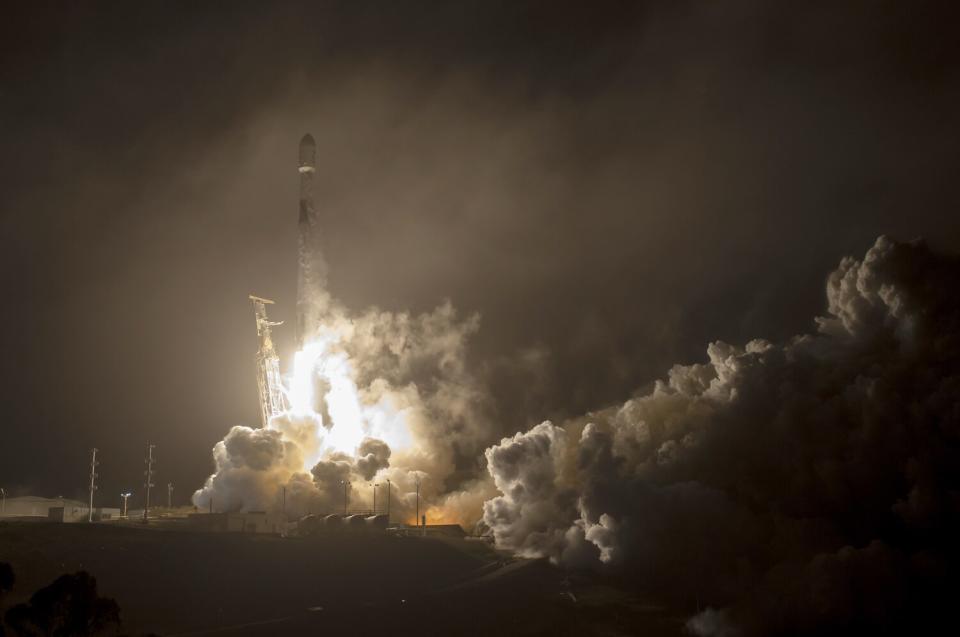A Football Field-Sized Asteroid Will Soon Pass by Earth: Here's What You Need to Know

Getty
Put this on your radar!
An asteroid that's as wide as the Eiffel Tower is tall — called 4660 Nereus (or 1982 DB) — is expected to skim past Earth on Dec. 11.
NASA considers the 330-meter asteroid to be "potentially hazardous" due to its size and proximity to our planet, according to Forbes, but it's also viewed as potentially advantageous for future spacecraft missions and scientific research. "It could be where we obtain the elements needed to power bases on the moon, Mars or in orbit one day," added the publication.
In addition to space advantages, Asterank lists Nereus as one of the most beneficial asteroids for mining due to its cost-effectiveness and mineral resources. The superb rock is composed of nickel, cobalt and iron worth $4.7 billion.
RELATED: Straight Out of Armageddon: NASA Tests Asteroid Impact Before Crashing Spacecraft Into One

Photo Courtesy of NASA/Newsmakers
On Dec. 11, the mega asteroid will be at its closest proximity to our planet in a span of 20 years. The size extremity of the space rock and its close distance to Earth creates characteristics that are ideal for scientists to target and rendezvous.
"It is ranked among the top 3% of the most accessible near-Earth asteroids, a team of researchers wrote in a 2009 paper. "Nereus was an early target for the NASA Near-Earth Asteroid Rendezvous (NEAR) mission that visited asteroid Eros instead."
Nereus may be considered a "close approach" by cosmic standards, coming within 2.5 million miles of Earth, but Forbes reported "it's comfortably about ten times further away from us than the moon."
RELATED: NASA Shares First-of-Its-Kind Video of Perseverance Rover's Touchdown on Mars from Multiple Angles

Photo by NASA/JOHNS HOPKINS APL/STEVE GRIBBEN HANDOUT/EPA-EFE/Shutterstock
This asteroid is especially favorable for a rendezvous because its orbit frequents a close vicinity to Earth, making it exceptionally accessible for spacecrafts. Scientists don't have any plans to rendezvous with the asteroid this time, though they are already examining and documenting research that could be used for future missions.
Asteroids and comets can be identified as NEOs, which stands for "near-Earth objects." According to the Planetary Society, "They have the potential to destroy civilization, and they whiz past our planet with alarming regularity. Sometimes we see them coming, and sometimes we don't." The publication added that "they pose a natural threat greater than any faced by our species in history."
Sounds alarming, but there's good news! Fortunately, scientists concluded in 1980 that further attention is needed for identification of potential incoming threats "that triggered a revolution in the Earth and planetary sciences," wrote the Planetary Society.
RELATED: NASA Confirms Earth Is Safe from 'God of Chaos' Asteroid for the Next 100 Years

NASA/Liaison
"Barely a year and a half later, the Society funded its first NEO project -- the pioneering search of Eleanor 'Glo' Helin and Gene Shoemaker. Among their first discoveries was 1982 DB, whose near-Earth orbit makes it one of the easiest targets for spacecraft to reach," according to the Society's site.
That asteroid was renamed Nereus by Society Member Robert Cutler, and is the same asteroid that is being examined today – but astroid Eros marked NASA's first near-Earth asteroid rendezvous.
"NEAR's landing on Eros marked the first time a U.S. spacecraft was the first to land on a celestial body, having been beaten by the Soviets in landing on the Moon, Mars, and Venus," according to NASA.
RELATED: Ingenuity Helicopter Takes First Aerial Color Photos of Mars: 'That's Why We're Here'

NASA/Bill Ingalls
NASA is currently in the process of devising a defense plan to combat incoming asteroids, should they ever pose a threat to Earth. On Nov. 25, NASA launched a rocket into space during the Double Asteroid Redirection Test (DART). The goal was to determine if the rocket could shift an asteroid in a different direction.
According to NASA's press release, DART is "the world's first full-scale mission to test technology for defending Earth against potential asteroid or comet hazards."
Here's a list of other asteroids approaching Earth during the month of December:
2003 SD220: 2,595 feet, will be 3.4 million miles away from Earth on Dec. 17.
2017 AE3: 393 feet, will be 2.2 million miles away from Earth on Dec. 29.
2016 TR54: 380 feet, will be 4 million miles away from Earth on Dec. 24.

